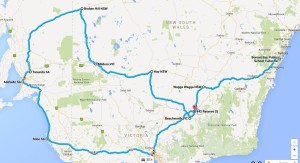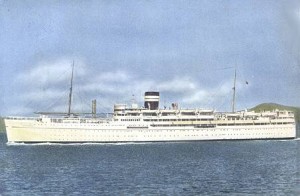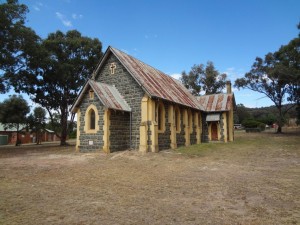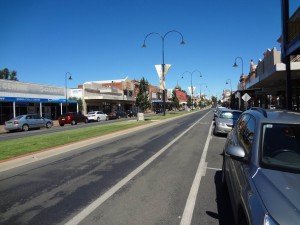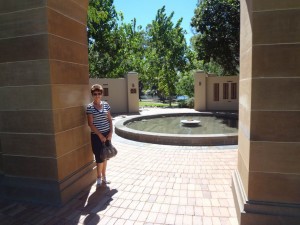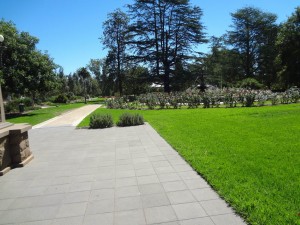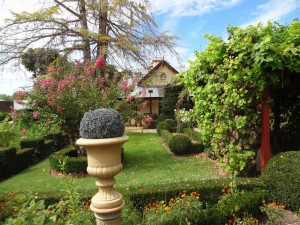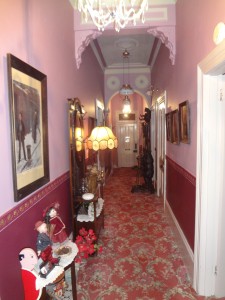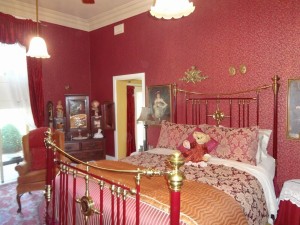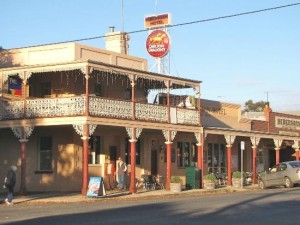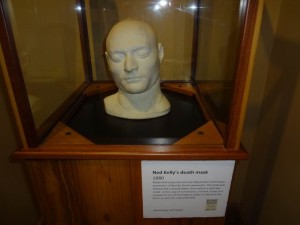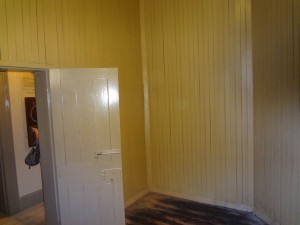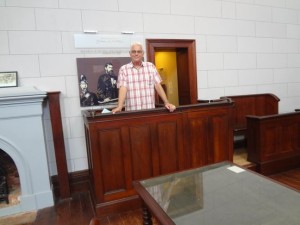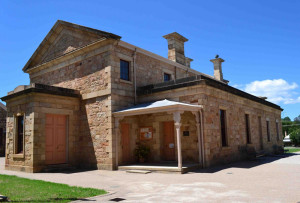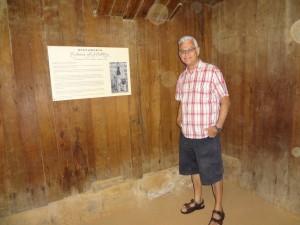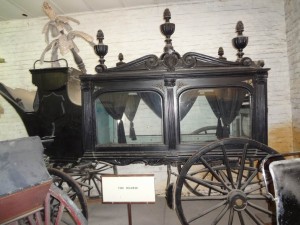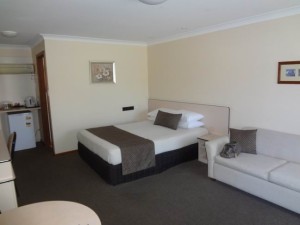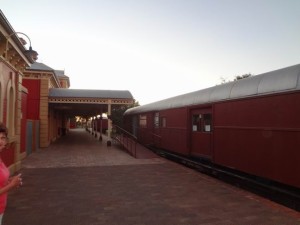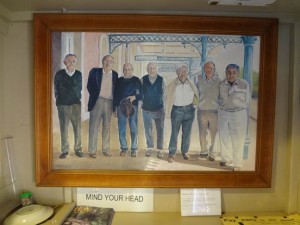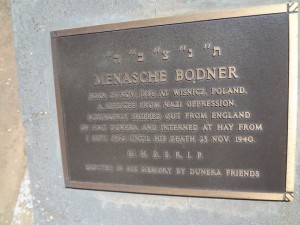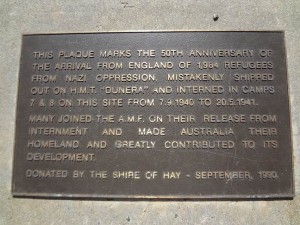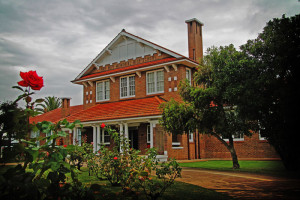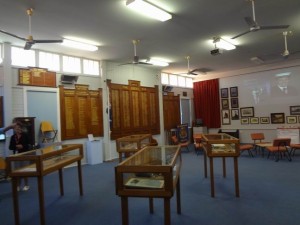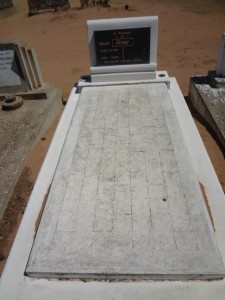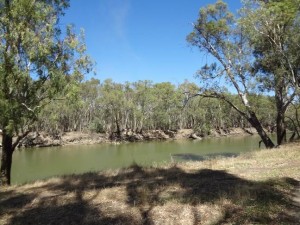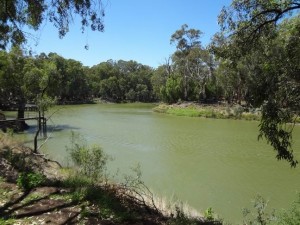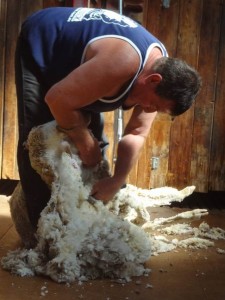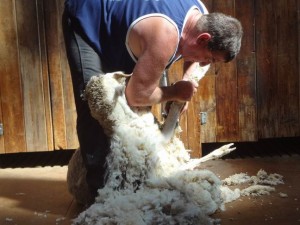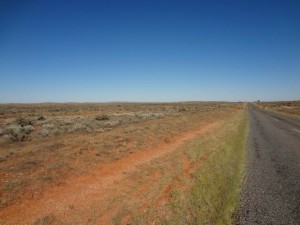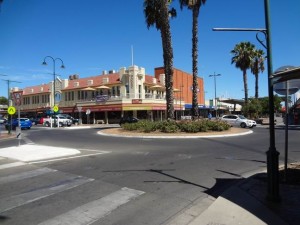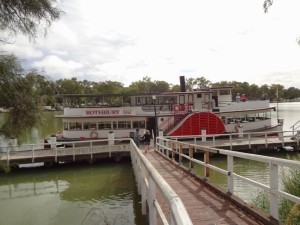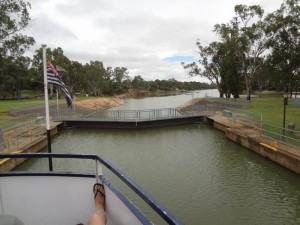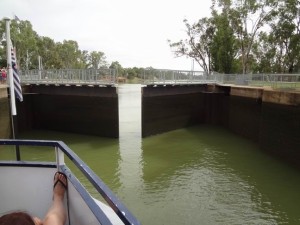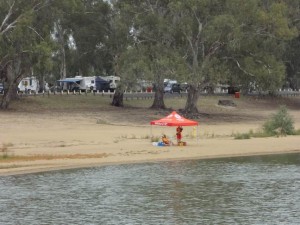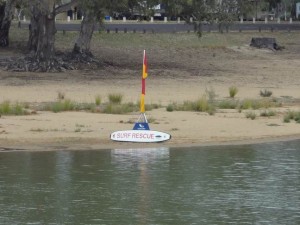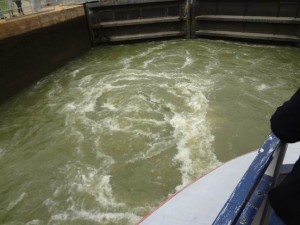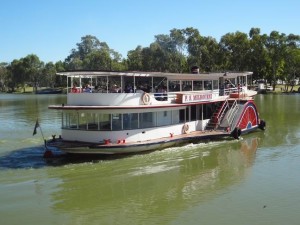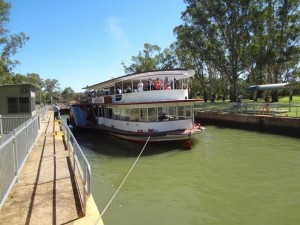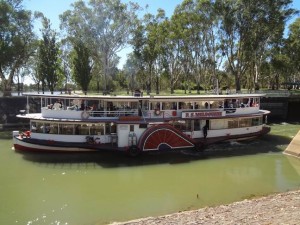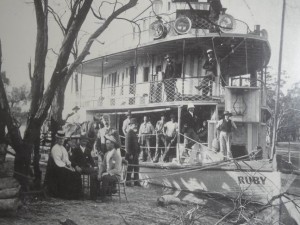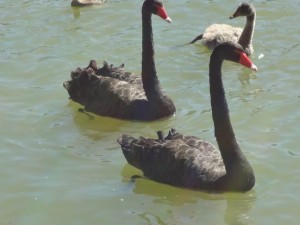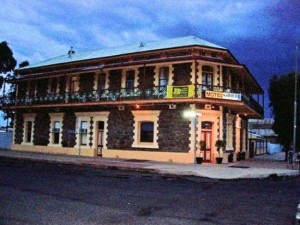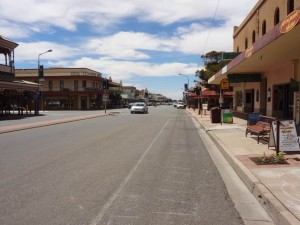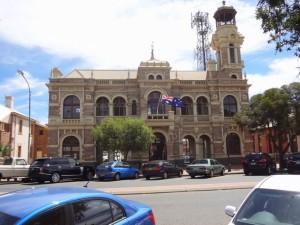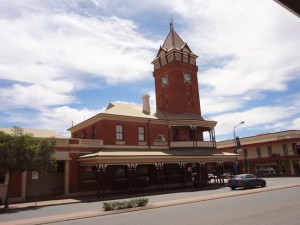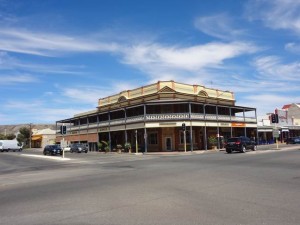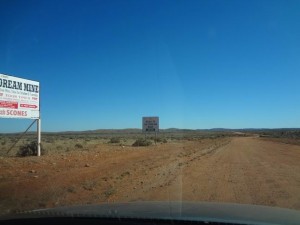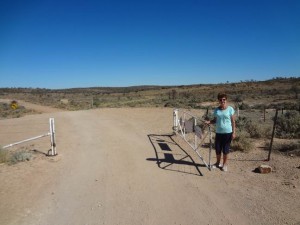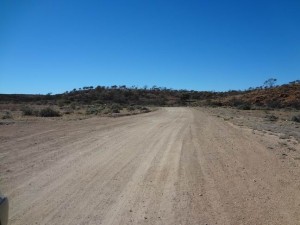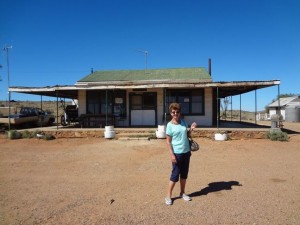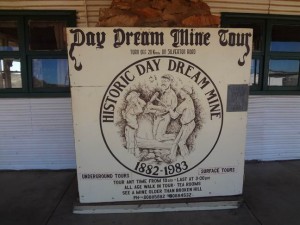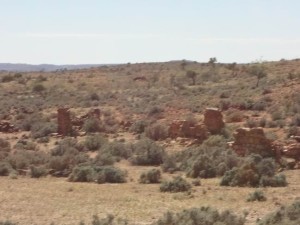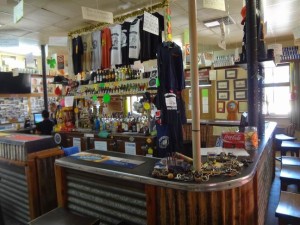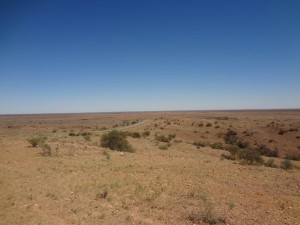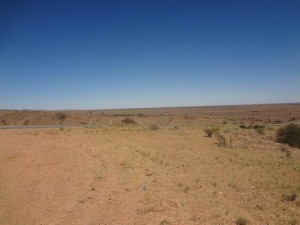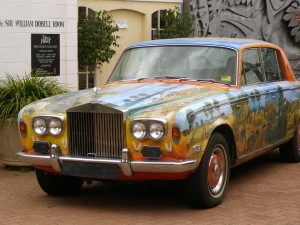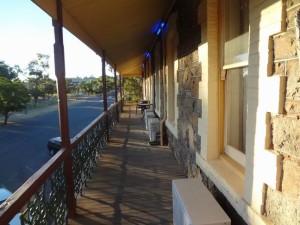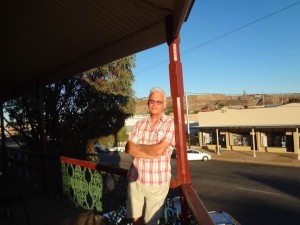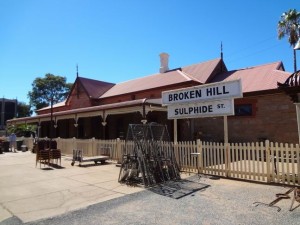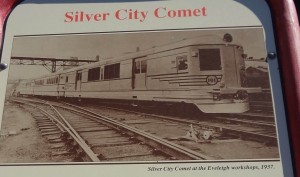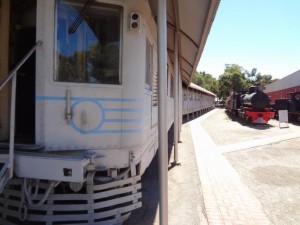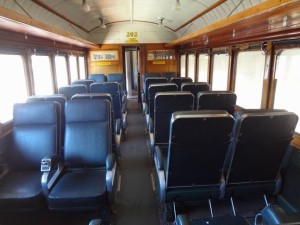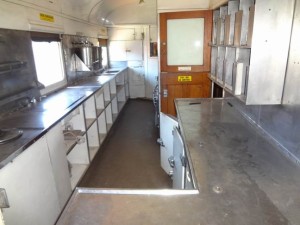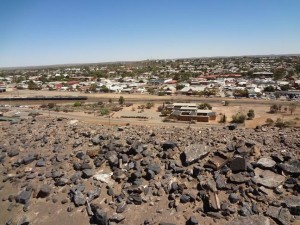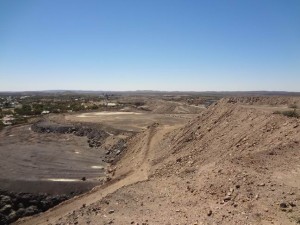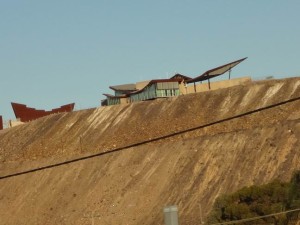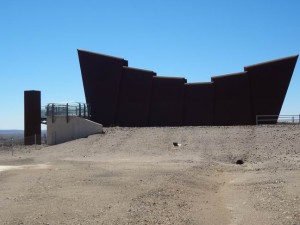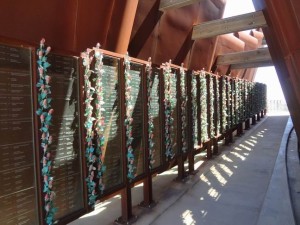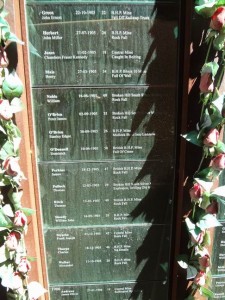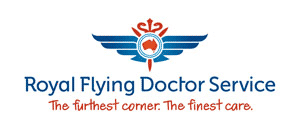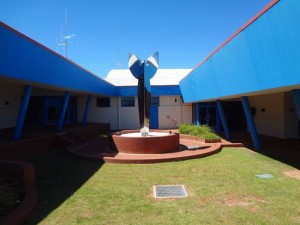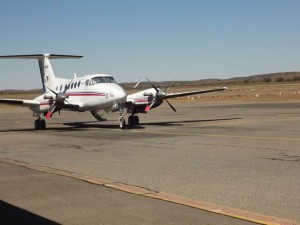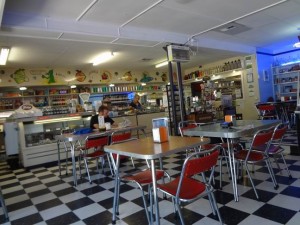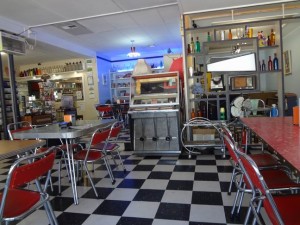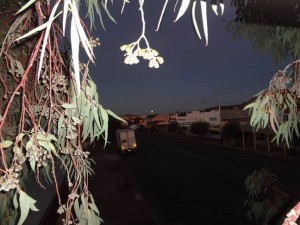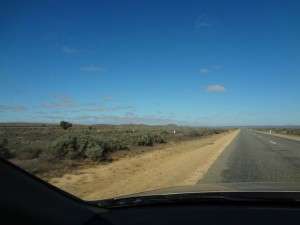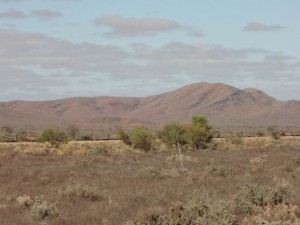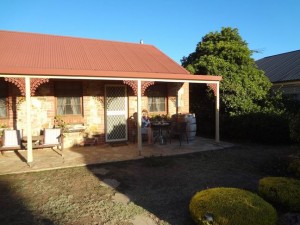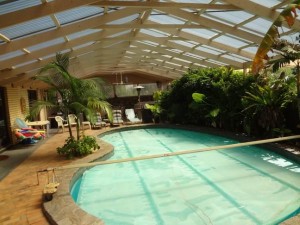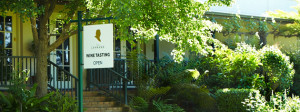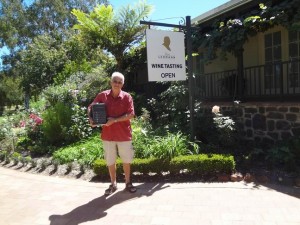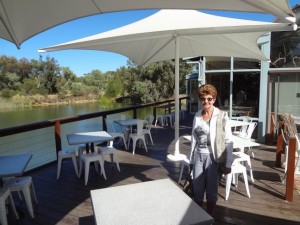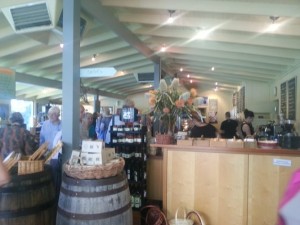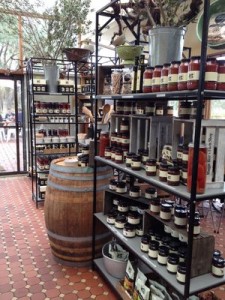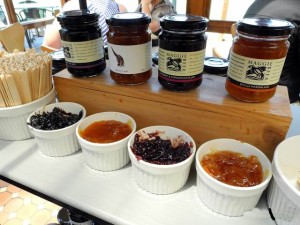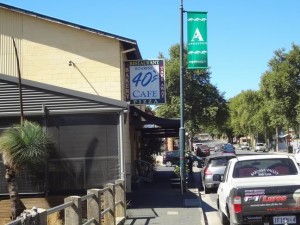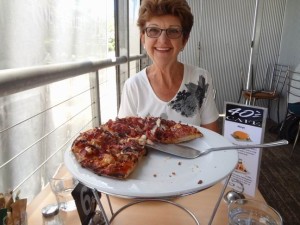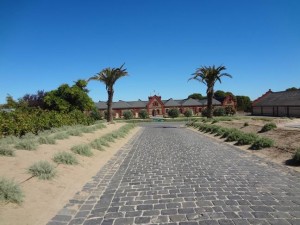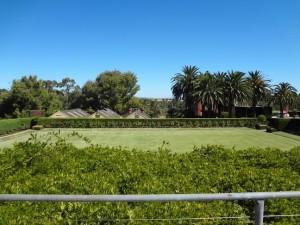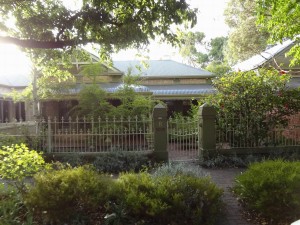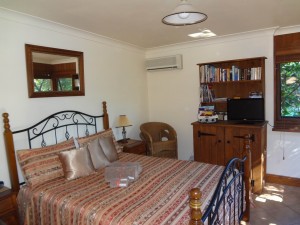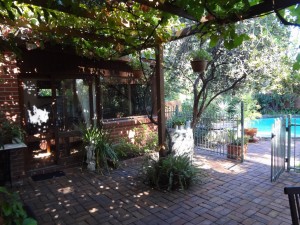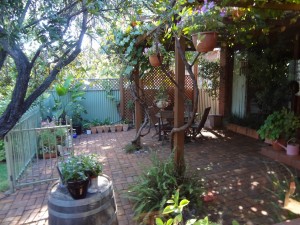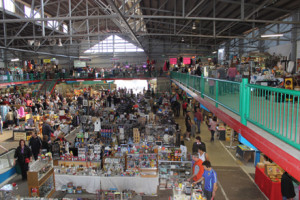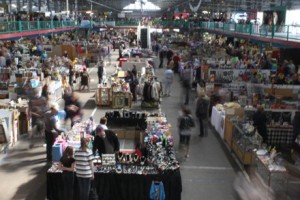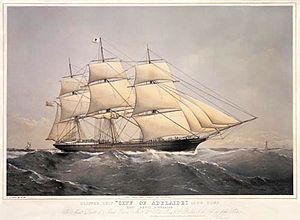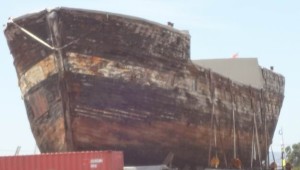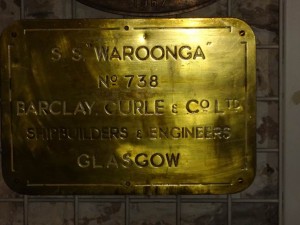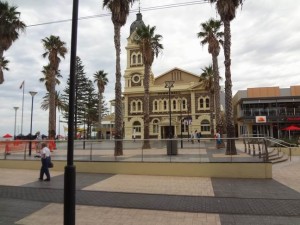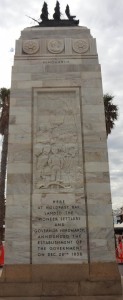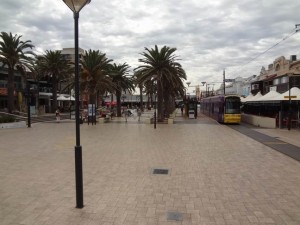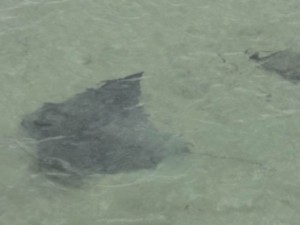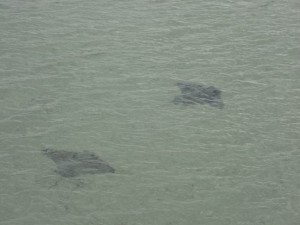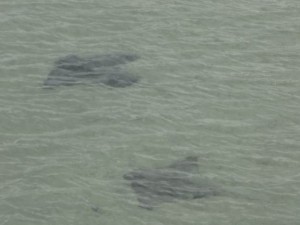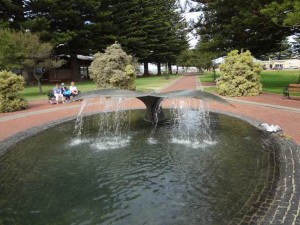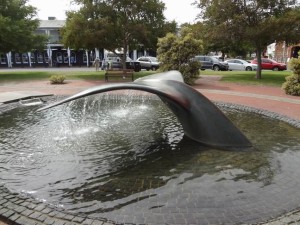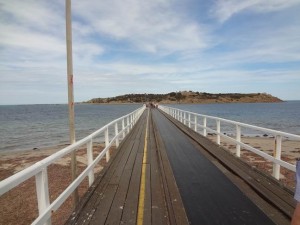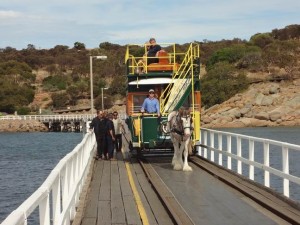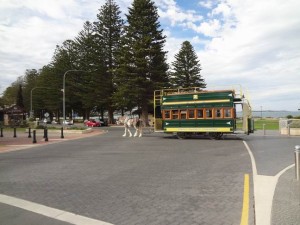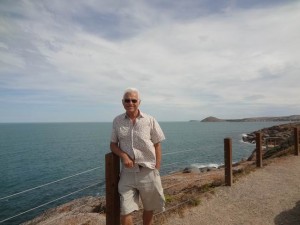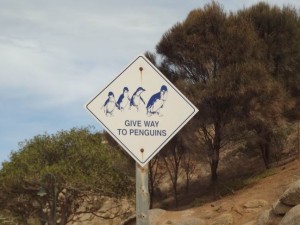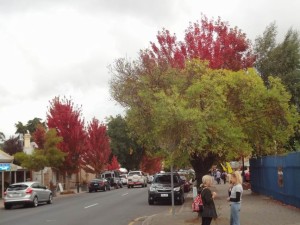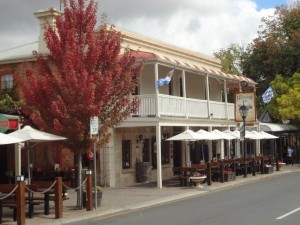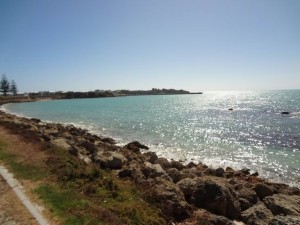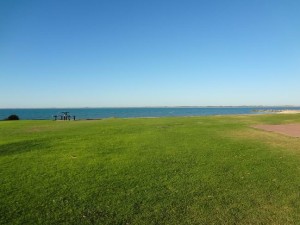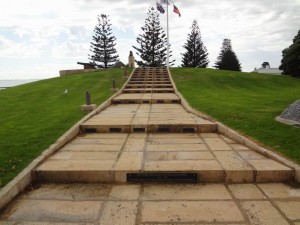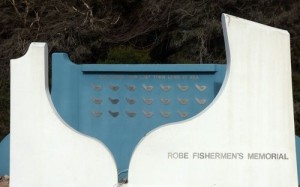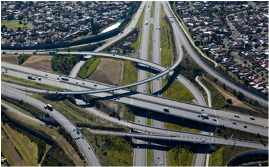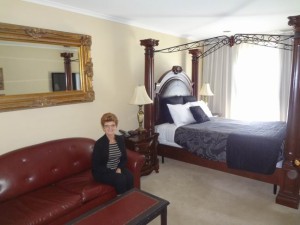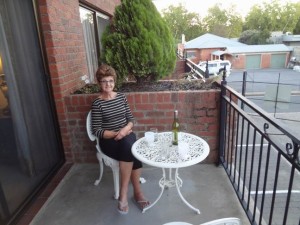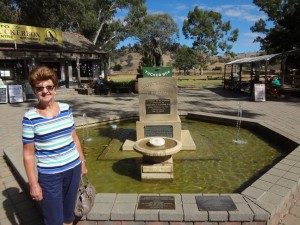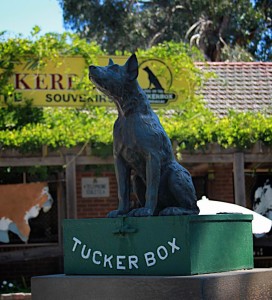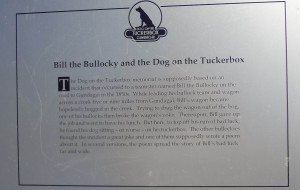2015 Australian Road Trip
Maureen and I have seen quite a lot of Asia so we thought it was about time that we saw some more of Australia.
We decided to visit Adelaide, which would also give us a chance to see Hazel & Ray (Hazel is Maureen’s cousin).
I planned the ‘Road Trip’, as it was now being called, to be basically anticlockwise – Sydney, Wagga Wagga, Mildura, Broken Hill, Adelaide, Robe, Ballarat, Beechworth, Yass and home – nine stops.
I checked each stop for local fairs, markets or festivals, partly to for us to see and visit and depending on the size of the festival could we obtain accommodation at the ‘right’ price. The one that caused me concern was the Adelaide Festival, which is extremely popular, but not with me, because I was only concerned with the nightly rate and large festival had a tendency to increase nightly rates.
I worked out that if we left Sydney late February by the time we reached Adelaide the festival would be reaching the end and perhaps the accommodation cosy would not be too big of a consideration.
I contacted the B & B that looked attractive and asked for a booking. I was told that they were full until the 12th March, and they knew that other B & B were also full, if I wanted a similar standard as the one I’d picked. They did say that we might get in to places that were ‘cheaper’ due to lower standards. I knew we would be able to book hotels, but the price per night was more expensive than we were used to paying in Asia at five star resorts, so I balked at paying over the odds due to a festival. I had to re-think the basic plans to be in Adelaide no earlier than the 12th March.
Back to the drawing board and I came up with a cockeyed plan for ten stops and we would zig zag our way to Adelaide, and still arrive on the 12th as planned.
Our first stop would be Wagga Wagga, and then Beechworth in northern Victoria. This zig would take us away from the main route to S. Australia, but we did wish to see the place, which is why it was at the end of our original plan. Now that it was near the beginning I had to find the best route from Beechworth to somewhere on the way to Mildura. I could have driven right through, but it was supposed to be a holiday and driving flat out for seven or eight hours was not attractive, plus I could be over tired and make a mistake. I was happy with a four hour drive so I researched the towns on the way to Mildura, which were between three and five hours drive from Beechworth. Eventually I found Hay a small town in southern NSW, and checked this place out for a night stop.
On checking various motels and B & Bs I came across ‘Interesting things to do in Hay’ on the Hay web site, so I clicked on this link and found the Dunera Museum! In the mid 60’s I’d sailed in the Dunera as a cadet when she was a school ship. During the war she had been a troop ship, and in 1940 she was used to ship nearly 2000 German and Austrian Jewish internees to Australia.
Dunera as a school ship
Many of the internees had fled Nazi Germany to the UK in the late 1930’s. Unfortunately many German & Austrian people living in Britain at that time were considered a security risk, so they rounded up and place in camps. The plan was to send them to Canada, but this didn’t work out and they were sent in HMT Dunera to Australia. The guards on the ship, and some of the crew, were not all that sympathetic to the internees, and the voyage became infamous, and the internees became known as the Dunera Boys.
I don’t think there were any women in the group, because wives and children were considered a lower risk and were kept in Britain.
Knowing the history of the Dunera Boys and having sailed in her twenty five years after the fateful voyage, I had to stop in Hay to visit the museum.
Our next stop would be three nights in Mildura, on the Murray River, followed by Broken Hill for three nights, and then Tanunda in the Barossa Valley for two nights, about a ninety minute drive outside Adelaide. These two nights in the Barossa would be the last two nights of the Festival, which would allow us to move in to the B & B on Saturday 14th March.
We would be in Adelaide for four nights, the longest time at any of the stops, after which it would be Robe, two nights, Ballarat for one night, and finally Albury for a single night before the last six hours drive home.
…………………………………………………………….
The drive from Bonnet Bay to Wagga Wagga went well. We left home at 8.40 am when the traffic was light so we were able to make good time. We stopped for a picnic lunch at Bookham. The place was picked at random, because we didn’t know when we would stop or where. We felt peckish so we stopped.
Bookham was ‘advertised’ as a rest stop and I thought it would be a layby, but it was a small hamlet; very quiet with a small car park, picnic tables, a toilet block and a petrol station fifty metres from the parking area. Across the road was an old church with ‘character’.
Bookham was so small that I wondered if they ever filled the church. The foundation stone was laid in 1910.
We arrived at the motel in Wagga Wagga at 2.00 pm. It must be something in the water when towns are given the same name twice. Just on the outskirts of Wagga Wagga we passed through Gumly Gumly, and later in our road trip we stood on a lookout point called Mundi Mundi.
For all our accommodation I used Trip Advisor as a guide to the standard of service, and cleanliness. Our first stop being Wagga Wagga, was the test factor of previous visitors recommendations.
I’d booked us in to the Junction Motor Inn http://thejunctionmotorinn.com.au/ in Wagga Wagga, and I found that the web site was easy to use, and responses to my e-mail were fast.
Jill & Peter, the owners, were very friendly and helpful on our arrival advising us where to eat and how best to get in to the town centre and where to park.
After we’d unpacked the necessities, we drove the short distance to the town centre. Like many country towns on a Sunday afternoon, it was QUIET! The only department store closed at 3.00 pm, ten minutes before our arrival. How lucky can I get?
Sunday afternoon in Wagga Wagga
We walked the length of the centre and the one thing I noticed was that they had a beautiful memorial park for those who served and died in all wars. The roses, the fountain and the eternal flame made a big impression on me, particular for such a small town.
Eternal flame and Memorial gardens
During the afternoon we visited the local Club to check it out for our evening meal. The Club was a sporting club, but as I am not particularly sports minded I have no idea which sport the club followed.
The restaurant looked fine, so we asked if we had to book for that evening, and the young lady that we spoke to told us that all should be well if we arrived early, and that they started serving at six.
The club offered a curtesy coach to and from the club, and as we were not all that far from the club we booked the bus for a 6.00 pm pick up, from our motel. Using the bus would allow us to have a glass of wine with the meal and not worry about driving.
A few minutes after six the bus arrived and we boarded, only to find that there were quite a few people already on board. The larger than expected number of people impressed us, and confirmed that we had made the right choice for our meal, because it was obviously a very popular club.
We headed away from the club and I thought we must be picking up more people for the evening session at the club. How wrong was I, the bus did a large circuit of the housing area dropping off the lunchtime members. Maureen & I were the only passengers going to the club that evening.
On entering the restaurant about 6.30 pm we found that there were six or seven other people already eating, so we had a choice of anything between twenty and thirty tables!
The buffet had started at 6.00 pm, but the fish section was still being prepared. I had the roast, but Maureen wanted fish and had to wait a further twenty minutes, and we were worried about booking our table.
During our walk around Wagga Wagga in the afternoon, we couldn’t help but observe the large number of very fat people. I was surprised at just how many.
Perhaps the ability to eat as much as you want for $15.50 (club members are cheaper), seemed to encourage people to eat as if they knew that a famine would start in the morning. Some very large people honed in on the most popular area of the buffet in an effort to consume the maximum amount of the never ending supply of ice cream, mousse, trifle and bread and butter pudding – this was after they had finished a main course that would keep me going for a week.
After our meal we asked about the service back to our motel. The same driver as before offered to take us immediately. On boarding the minibus we conversationally asked about house prices. The driver was happy to take the ‘long’ route and spent the time chatting and showing us the outside of various houses in the area, and the estimated prices. We found the short tour very interesting, and the driver entertaining. He was a bus driver during the day and drove for the club in the evening – he loved to drive.
The prices for some lovely looking homes were quite an eye opener for us Sydneysiders, and our very high house prices.
………………………………………………….
Next day we repacked the car and headed to Beechworth in Victoria. The drive was just over two hours, via the outskirts of Albury. It was an easy drive, and once off the freeway a very pleasant drive along quiet country roads.
Finding our accommodation ‘Rose Cottage’ was easy. http://www.beechworth.com/rosecottage/
Rose Cottage – from the front gate.
The decor is ornate country cottage, with a homely feel of yesteryear. The cottage has a large number of interesting pieces, which held my attention. Where ever I went there was something different and many pieces reminded me of an elderly Aunt’s home that I used to visit as a child. She lived in Caernarvon, North Wales, and her home was country-ish. Of course in Rose Cottage everywhere was rose coloured.
Entrance hall Our room – the teddy bear is not mine!
Our room wasn’t quite ready when we arrived, so were offered two free vouchers to try out the local pub called The Hibernian, which was a short walk (about fifty metres) from Rose Cottage, just in time for a pre-lunch drink.
A very friendly pub with good food and cold beer – couldn’t fault it.
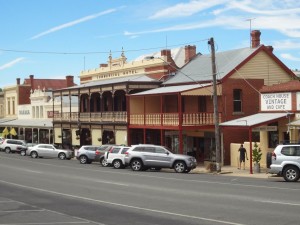 Beechworth is a piece of ‘yesterday’, quiet streets, which are very wide, friendly locals, and because we were out of season (just before Easter) it was a pleasure to just wonder in and out of shops to check out the local produce (mainly honey), and wine.
Beechworth is a piece of ‘yesterday’, quiet streets, which are very wide, friendly locals, and because we were out of season (just before Easter) it was a pleasure to just wonder in and out of shops to check out the local produce (mainly honey), and wine.
Old buildings and quiet streets.
During our stay we saw much of the Ned Kelly gang era, from their last stand and gun fight, to Ned Kelly being committed for trial in Melbourne, where he was found guilty of murder and hanged.
Ned Kelly’s death mask.
The old court house is as it was in the 1870’s and all of the furnishings, including the large clock, were used in that period.
This is the holding cell where Ned Kelly waited to be called in to court.
The picture behind me shows Ned Kelly standing in the same dock during his committal hearing for the murders of Constables Scanlon and Lonigan.
The last time this court was used was in 1989, after 131 years of continual service.
It is believed that Harry Power, (also known as Johnson) later known as ‘the Gentleman Bushranger’, was Ned Kelly’s tutor in his life of crime. Power is virtually unknown today.
This picture was taken in the original cell, under the town hall, where he (Power) was held in Beechworth before being sentenced to fifteen years for armed hold ups.
Harry Power retired from a life of crime, after finishing his fifteen years in gaol, in 1885. He was an old sick man and used to earn a living as a tour guide around ‘Success’, which was the prison ship in which he had served seven years, as a prisoner. He was known as ‘The last of the bushrangers’.
In 1891 he drowned in the Murray River at Swan Hill, so ending the era of the ‘Bushrangers’.
As we walked from historic site to historic site we were always greeted by people in traditional dress of yesteryear, including many of the men wearing long beards of the period of the 1850’s to 1870’s, all genuine. The people involved with the history of the town were, I believe, volunteers and their labour of love shows through, via their enthusiasm.
Next to the Court House is the telegraph office where one can still send a message via Morse code. It opened in 1857. As with many Beechworth places of interest there is always a volunteer in attendance. The elderly gentleman who was happy to talk to use and show us how everything worked used to be a ‘key-man’ from way back. We spoke of the differences between his day on land and a ship’s Marconi radio operator when I was at sea.
For a small fee he would send a message, via Morse, anywhere in the world. It turned out that the message went to someone in Melbourne, and after that it went by post to its destination. The Morse system is operated by volunteer hobbyists, so sending within Australia was not a problem because local hobbyists would decode and post locally within Australia, but internationally it was a problem, but by using the snail mail postal system the message would reach its destination – eventually.
It was suggested to us that we drive to the top of Mount Stanley for views of the Victorian Alps. This sounded a good idea so we set off and drove to Stanley, the small town at the foot of the mountain.
As we approached the lower part of the mountain the road became a dirt road.
The dirt road was not a problem as we climbed higher and higher until it started to get very narrow, with a cliff edge on one side and forest trees on the other. Glimpses of a very good view could be seen occasionally by Maureen, but I was not in the mood to take my eyes off the road, which was getting narrower still, and a puncture would be a major problem on the steep incline.
In addition I was concerned that if we met another vehicle coming down the mountain we would not have enough room to pass, and one of us would have to reverse a considerable way.
Eventually we came across a small area where the road was a little wider, with a small cutting in to the woods to allow cars to pass. I took advantage of this area to turn the car around and return to civilisation. The last thing I wanted was any serious damage to the car as we had only just started our road trip.
Later when we mentioned this aborted trip in our B & B we were told that the view was not very good because the trees had grown so tall that many obscured the Alps. Apparently the green brigade objected to the pruning of the trees to maintain the views.
On our list of ‘must see’ was a cemetery, which when you think about it is an unusual holiday destination. The cemetery is famous for the Chinese connection with its many graves and Chinese shrines from the gold rush days.
As we respectfully checked the Chinese area, a local introduced himself as the Manager of the cemetery and asked if he good he help?
I explained that we were visiting from Sydney and that we were interested in the old graves. From then on the Manager was a fund of knowledge of the ‘old days’ and brought to life (excuse the pun) the history of the cemetery and how the Chinese section grew. The areas which we thought were ‘blank’ as if waiting for the next funeral where in fact graves of paupers or the mentally ill from the local mental institution, which no longer exists. Many of the mentally ill were abandoned by their family, and the patient was never visited. When they died no one claimed the body, so they were buried in the pauper’s area. In some cases the family had left the area and the authorities were unable to trace the new address.
There were a number graves pointed out by the Manager, which were famous. I’ve listed three that I found interesting.
John Drummond; born 1791 in Scotland. He joined the 71st Regiment at 15, and served in eleven battles during the Peninsular Napoleonic war. He fought at the Battle of Waterloo in 1815.
He was wounded in 1811 and 1813, and discharged from the army as a sergeant in 1828 ‘worn out through length of service’.
He arrived in Australia in 1831, and perhaps the gold attracted him to Beechworth in the 1850’s. He was a caring man because in 1858 he gave up his army pension for the widows and children of those killed in the Crimea war. He died at 73 years of age in 1865. He is thought to be one of only ten men in Victoria who fought at Waterloo.
James Riley; born New Jersey in 1829. He enlisted in the American Army in 1862, and was badly wounded in the right leg at the battle of Reams Station on Weldon Railroad. He turned up in Beechworth and married, in 1886, a local widow. He died in 1901.
James Storey; born in New York in 1818. He enlisted in the 2nd US Dragoons in 1840 and fought against the Indians (Seminole Indians I think), in the West. He re-enlisted in 1845 and served in the Mexican War between 1846 and 1848. He fought at the battle of Palo Alto, Resaca de la Palma, Monterey and Beuno Vista, where he had his horse shot from under him.
In 1850 he went gold digging in California, and in 1853 he arrived in Beechworth looking for gold. In 1858 he married an ex-convict, who had been transported from England for theft in 1839. He died in January 1913 at the age of 95, and is buried with his wife in Beechworth cemetery.
In 1932 the last Chinese person was buried in the Chinese section, he was 105 years old, having lived in Beechworth for over 70 years.
Without the Manager I doubt that we would have gained so much from our visit.
From the cemetery we decide to visit the carriage museum. It wasn’t easy to find, but we did find it in the grounds of a brewery.
We seem to have visited a number of places in Beechworth linked to death, perhaps it is our age that we can look upon the trappings of death, without being part of the main scene – yet.
I noticed that the brewery offered ‘tasting’ so after viewing the various carriages I felt in need of a few tastings, so we entered the brewery. I asked about the type of beer that they brewed and was told that they didn’t brew beer but cordial! A ‘cold one’ was not forthcoming.
To be fair, the cordial tasted very different than the supermarket type cordials. The history of this brewery was interesting.
They had an area dedicated to the story of the brewery, which opened in 1865, brewing beer. It wasn’t until the Temperance Society became involved in the 1920’s that the brewery changed from beer to cordial. It is located over an underground spring of pure water, for both the beer and cordial. The brewery is called Murray Breweries, and it wasn’t until I left Beechworth that I found out that the local beer brewery is Bridge Road Brewers, and they offered real local ale. You win some and loose some, but Murray Brewery was enjoyable, if different.
…………………………………….
After three nights in Beechworth, we were off again, this time to Hay in NSW. The trip was about three hours, and we passed through some ‘real’ outback area. The experience of driving through the wide open spaces was quite exhilarating.
Highway Inn Motel – www.highwayinnmotel.com.au
We had one of the largest motel rooms in which my wife and I have stayed anywhere in Australia. The room was clean, with a very comfortable bed, large bathroom with powerful shower. In addition to the queen bed there was a large sofa and the normal table & chairs. In the cupboard we found an ironing board & iron etc. The air-conditioning system worked very well. The large fridge (bigger than the normal motel bar fridge) was very efficient, and the WiFi worked well.
I found that it was very easy to book our room, via their web site, and Leanne (Leanne & Alex are the owners) was very helpful and informative when we checked-in.
We were in Hay for two nights and on the first night we visited the bowls club for our evening meal. The restaurant was ‘Chinese’, but it was the strangest Chinese food that I’d ever tasted.
The following evening we visited the Services Club, and once again the restaurant was ‘Chinese’. This meal was worse than the previous evening’s Chinese effort. I’d never tasted ‘Asian’ food quite like the two restaurants in Hay. It was a real toss-up to work out which was the worst.
When I booked the motel I mentioned that I was particularly interested in the Dunera Museum, because I’d sailed in her when I was a cadet in 1965, and Dunera was operating as a school ship. Leanne asked if I wanted her to contact someone to show us around the museum. I jumped at the offer.
On the day of arrival Leanne asked me to phone David Houston, who was the Museum’s Chairman, because he was keen to meet us. David was kind enough to offer his services and to show us around the museum the following day. We planned to meet at the museum 9.00 am.
We were very fortunate to have David as our guide. His knowledge of the camps and all things about Hay is limitless.
We met at the Dunera Museum, which is located at the railway station inside two railway carriages. This is the station where the trains from Sydney arrived to disembark Italian and German internees from the UK, during WW2.
If you plan to visit the Hay area try and plan your visit for when David is around, because he will make your visit memorable. Although he is in his eighties, he is as sharp as a tack and old enough to remember the first train arriving when he was five years old. David brought to life the misery of some of the internees, as well as the happy side for others. Later the internee’s camp was expanded to become a camp for Australian- Japanese internees, and later again for Japanese POWs.
The photo shows two original railway carriages that brought the internees to Hay. The museum artefacts are in the carriages.
The picture below is of the main information sign in the grounds of the railway station, at the end of the platform. The station is no longer used by the Australian rail system.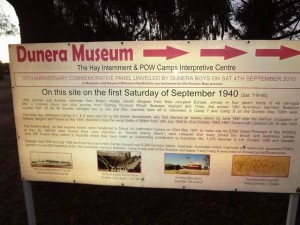
This painting is of some of the internees who returned for the 70th anniversary ceremony.
The top photo is of the first internee death.
The other is the plaque at the camp site marking the 50th anniversary of the internee’s arrival. There is nothing left of the camp today.
At the end of the war the Japanese internees where sent back to their ‘home land’, Japan. The problem was that many who were sent to Japan were born in Australia, and didn’t have any concept of living in Japan. Their first concern was that they couldn’t speak Japanese!
Later David took us to the War Memorial High School, which he attended as a pupil. The school is a memorial to the men of Hay who served in WW1. The local people decided that the best memorial to those who fought would be a school, so they started a campaign to collect money to build the school. They asked for help from the Government of the day, and the Government believing that the town’s people would not get enough to build their memorial, felt safe in promising that they would match the town’s effort dollar for dollar (at that time it was pounds, not dollars). Little did the Government realise the town’s belief in their memorial. The town collected enough to start building the school, and the Government had to cough up the balance, which enabled to school to be completed.
The attitude of the pupils to their school is an inspiration, because the pupils condemn anyone who dares to deface the school in any way.
The grounds are neat and trim and the school itself is clean and welcoming. As we entered the school’s main door we found ourselves in a large entrance hall, which is a mini museum to men and women who left Hay to fight for Australia
Entrance area of the school.
The youngest Australian to win a VC, William Jackson, came from Gunbar, which is very close to Hay, he was eighteen when he won it 1916 in France, and his bravery is recorded in this memorial.
While walking around the small museum David explained the origin of the school and why it was called a Memorial School, it was then that we realised that the school is a living memorial to those who died in battle. Anyone can view the entrance area, which contains various memorials and records of servicemen from Hay, including today’s Australian service personnel in the Middle East. It is a pity schools from Sydney couldn’t visit to see how the pupils protect their own school from graffiti and mindless damage. When you are in Hay please make an effort to visit this school, you do not require special permission, just ask at reception.
From the school David took us to the local cemetery (more death viewing) to show us the local Chinese section.
While in the cemetery we saw a grave with the date of birth on the headstone, but without a date of death. It turns out that the Phill Gray is still alive, but he doesn’t trust his family to give him a proper headstone and due respect after he dies. He saves his money, and when he has enough he adds comments to his headstone. I wonder if he was a Boy Scout and has taken the Boy Scout moto of ‘Be Prepared’ to heart. 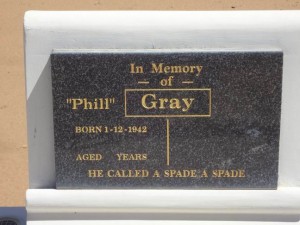
Very close to the cemetery is the Murrumbidgee River. If we’d realised this perhaps we could have sailed from Wagga Wagga to Hay, because the same river flows through Wagga.
Murrumbidgee means ‘big water’ in the Wiradjuri language, which is spoken by one of the local Aboriginal peoples.
A touch of real Australia – isn’t it beautiful?
Shearing is one of the things you should see when visiting the Hay area. The museum, come café – souvenir area makes interesting reading of the old days. Watching the shearer shear a large sheep in less than five minutes makes you think how hard the life must have been in the early years. Is it any wonder that some had ‘shearers back’ and looked old before their time.
After two nights and one very interesting day in Hay (thanks to David) we were on the road again heading Mildura, in Victoria.
This journey, along flat limitless scenery was an easy drive at high speed. It brought home the struggles with which the people of the 1800s had to contend, when making a living.
This road has a speed limit of 110 km / hour, most of the way to Mildura.
Mildura is a very pleasant town where everyone seems to have time to be polite and friendly.
A quiet Saturday afternoon in the centre of Mildura.
The weather was good, not too hot yet warm enough to walk around without a coat.
Our accommodation at the 7th Street Motel www.7thstreetmotelmildura.com.au was close to everything. We were able to walk to the town centre within ten minutes, or to the pier for the paddleboat, again about ten minutes, and a little longer to Lock 11. The motel had a small swimming pool, which I planned to use, but never got round to it . . . nor did we get to sit out in the BBQ area because there was much to see in and around Mildura. We only had three nights (two days).
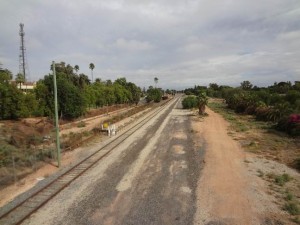 On the evening of our day of arrival we visited a local market. To reach the Saturday evening market we had to cross a single railway line that linked Mildura to the rest of Australia. We were not happy crossing the line in this manner, but we were advised that this was normal for those who lived so far from the footbridge that crossed the line. This picture was taken from the footbridge, and our crossing area was is the distance close to the tall tree, near the line, on the left. In the time we were in Mildura I don’t remember seeing a train – goods train or passenger train. Since our visit I found out that the line is no longer used by passenger trains.
On the evening of our day of arrival we visited a local market. To reach the Saturday evening market we had to cross a single railway line that linked Mildura to the rest of Australia. We were not happy crossing the line in this manner, but we were advised that this was normal for those who lived so far from the footbridge that crossed the line. This picture was taken from the footbridge, and our crossing area was is the distance close to the tall tree, near the line, on the left. In the time we were in Mildura I don’t remember seeing a train – goods train or passenger train. Since our visit I found out that the line is no longer used by passenger trains.
The market was smallish, but interesting, with Indian dancers and Indian music (Indian sub-continent not ‘red’ Indians). Plenty of fresh food and hot and cold snacks were for sale. Gluten free cakes were a big winner with Maureen.
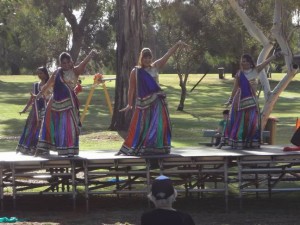
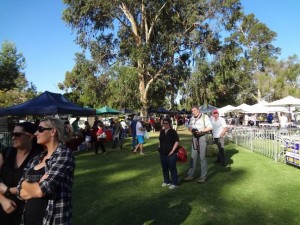
The beautiful evening weather helped make the visit that much more enjoyable.
The following morning we decide to book a trip on a paddle steamer, after all we couldn’t come to the main inland city on the Murray River and not go for a ‘sail’.
A two hour trip on the Rothbury was interesting and educational – particularly the difference between the side-wheeled Murray River boats compared to the American stern paddleboats on the Mississippi.
The Master of the Rothbury, who was also the helmsman gave an interesting commentary of the history of the river, and how the authorities at the time planned a network of locks to control the flow and irrigate the land.
They never did complete the total number of locks that they planned, but Lock 11 at Mildura is still working today.
The riverboat entered the closed lock, which is full of water. The water level drops until it is safe to open the gates and allow the river boat to re-enter the river.
Later I saw the oddest surf lifesaving team. As you see we are in a calm river, which doesn’t have any surf. Swim between the flags!
After a certain distance cruising down river (it would take us a number of days sailing, before we reached Adelaide and the sea), we turned around and made our way back to the lock so as to gain the height of the upper river.
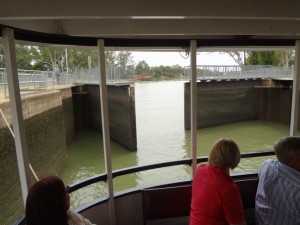
Lock gates closing behind us, after which the sluice gates are opened to allow water from the upper river to rush in to fill the lock – it was a lot quicker filling than draining the lock when we headed down stream.
The following day we watched the Melbourne leave the pier, turn and make her way down stream to the lock for a lunchtime cruise.
The size of the lock can be seen in comparison to the paddle-boat.
The Melbourne leaves the lock and heads down stream.
It is not all that long ago that the riverboats carried freight and passengers rather than just holiday makers.
The black swans on the upper river couldn’t care less about riverboats on such a lovely day.
Our next stop would require us to move back in to New South Wales to reach Broken Hill with its hot desert climate. Because the heat is a dry heat (very low humidity) the high temperatures didn’t causes us as much distress as lower temperature, but higher humidity of Sydney.
The Silver City Highway took us out of Mildura and we headed north to the home of the largest mining company in the world.
Charles Sturt, the explorer, in 1844 saw and named the Barrier Range, and commented in his diary that he had seen a ‘broken hill’, as part of the Range. Later silver ore was found at the ‘broken hill’. The hill is no more due to the silver ore having been mined and mined.
Our accommodation in Broken Hill was a converted pub called the Duke of Cornwall. http://www.dukeofcornwallinn.com/
I’d asked for an upstairs room close to the balcony, which wrapped round the upper two sides of the pub.
The room was a good size with space for an extra single bed, and a three seater settee. Plus a large fridge, and table and chairs, so we couldn’t complain of being short on space.
Broken Hill is an interesting ‘old Australian’ town, with wide streets, friendly people and plenty of places to visit.
Town Hall Post Office
The building in the photograph of the town hall is just a façade. This is all that is left of the original town hall. Behind the façade it is a now a car park, where the remainder of the building used to stand until the 1970’s. It is thanks to the Broken Hill historical society that they managed to save the front aspect of the building.
Fortunately the post office next door is still operating as a post office.
Not far from the town hall is the Palace Hotel made famous (or should that be more infamous?) after the release of Priscilla Queen of the Desert in 1994. While we were in Broken Hill part of the Palace Hotel was being refurbished.
In addition to the fame from being involved with the film, the hotel is also famous for the inside murals. We were allowed in this area even though the area was being refurbished.
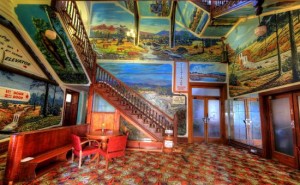
I wanted to have a drink in this pub and perhaps a meal, but due to the disruption of refurbishing the bar was closed and only the restaurant was open.
To enter the hotel restaurant the access point was down a side street, towards the rear of the hotel. The main front door was locked and barred due to the ongoing work.
We paid a visit in the afternoon to check out the restaurant for our evening meal. It looked fine and the young lady that we dealt with seemed efficient.
We’d booked for 7.00 pm, and arrived a few minutes early, to be shown to a table. There were just enough people in the restaurant without it being too crowded.
We studied the menu for a few minutes before ordering a bottle of wine and our food. We sat back and thought a glass of wine would go down well before the meal. We waited, and we waited, and we waited – no wine, and of course no food. I spotted the young lady who’d accepted our booking in the afternoon and went over to her.
I whispered in her ear that she or someone had five minutes to bring the food and wine or we were leaving. Within three minutes the food arrived; my Portuguese chicken burger was slightly warm, but fortunately my wife had ordered a salad. It was obvious that our meal had been prepared and then forgotten.
The threat of walking out seemed to have caused the male waiters, who made a point of being effeminate, to get in a ‘tizz’ and to be more interested in making personal arm waving gestures than making sure the customers were happy.
The final straw was when I asked for the bill – which arrived with the speed of light!
Once again they couldn’t get it right – they’d added a second bottle of wine on to our bill. Suffice to say it was removed. Perhaps their arm waving self-centred egos got in the way of doing their job properly.
We had three nights in broken Hill and we could have stayed longer, because there is so much to see.
The following morning we headed for Silverton which is a ‘ghost’ town about twenty five kilometres from Broken Hill. On the way there we planned to visit an old mine. We thought the tour of the mine began at 10.30 am, so planned to arrive just before the start.
The sealed road out of Broken Hill was fine until we came to the turn to take us to the mine, which was about thirteen kilometers along a dirt road.
The picture on the left is of the beginning of our thirteen kilometer drive. We had to go through two or three barred gate access. Maybe the gates were to comply with health and safety at night, because there is nothing worth stealing, unless you are big in to dust.
I’m glad that I didn’t clean the car this morning.
Eventually we arrived at the mine. A young lady was the only occupant of this ‘office’ and she told us that we had missed the start of the tour by half an hour, but we could join it if we wished. The next tour would be about an hour and a half later.
We declined her offer and just chatted about the mine as she pointed out various items of interest, which were old rusty mine equipment from the 1800’s, and where the old town used to be located.
The picture shows the remains of the old ‘town’, more like individual houses, built by the miners, which flourished between 1882 and 1889.
We didn’t wait for the next tour and with hindsight we made the right choice. The following day we met a husband and wife and the husband’s mother, who were all from Yorkshire. They were on the mine visit while Maureen and I were in the ‘office’ at the mine. They commented about not having the correct footwear to climb down a steep ladder to the bottom of the mine. The old lady was 81 and she was glad when it was all over, but her son and his wife also found it hard going and they were in their late fifties. Having been down a deep slate mine in North Wales (on a vertical train) we were quite happy to miss the Day Dream Mine – perhaps if we were younger we would feel different.
Our next stop was the ghost town of Silverton.
As soon as I saw the local pub I recognised it from various films – Mad Max II, A town Like Alice, Adventures of Priscilla, Queen of the Desert, to name three that I’ve seen, and I couldn’t count the number TV adverts.
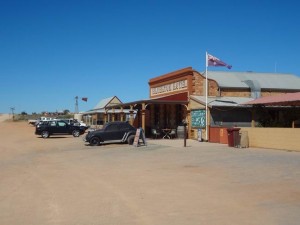
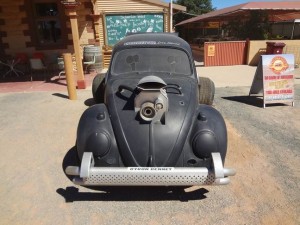
This is the Silverton Hotel, and outside is parked an ‘INTERCEPTOR love child’ from the Mad Max film.
As you can see it was hot and dry, so we had to go in for a cool drink from the barman behind the corrugated-iron bar.
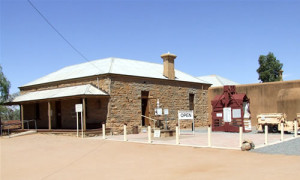 The local gaol has been turned in to a museum, which focused on the surrounding area. What we thought would be a quick visit turned in to a much longer visit, because of the large number of exhibit rooms, and the display items outside at the back (beyond the wall in the picture). It was a fascinating visit.
The local gaol has been turned in to a museum, which focused on the surrounding area. What we thought would be a quick visit turned in to a much longer visit, because of the large number of exhibit rooms, and the display items outside at the back (beyond the wall in the picture). It was a fascinating visit.
In the gaol museum we asked about the Mad Max film and a local told us of the view from Mundi Mundi Lookout (another double name). From this lookout we could see the flat plain where some of the exciting scenes from the Mad Max film were shot. Where we stood seemed to be the only ‘high’ ground in the area. I say high, but it was only a few feet higher than the surrounding land.
Not a cloud in the sky.
http://www.madmaxmovies.com/mad-max-2-the-road-warrior/filming-locations/index.html
Check the link for some of the scenes from Mad Max II filmed at Mundi Mundi. Nothing has changed since making the film in 1981 – even the ‘telephone’ poles are still there, but the street sign in the film was a prop.
We returned to Broken Hill so as to visit the Pro Hart’s gallery. I am not a particularly enthusiastic art viewer – it has been said before, ‘I know what I like’, but I don’t always understand what I am viewing. The gallery is well laid out over three levels. Many of the paintings had a description alongside, which helped the viewer (me) to understand what the artist was thinking as he painted. The Australian picnic or race meeting were easy to understand, but each one took time to study the full detail. He painted many pictures of ants. 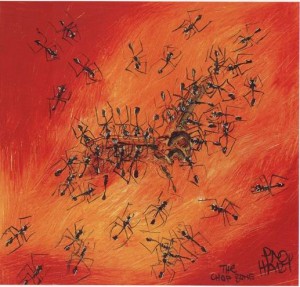
Coming from Broken Hill he would have had a great deal of experience with ants and other insects. Dragon flies were also popular with this artist.
I have read that he approached a tattoo artist to have ants tattooed across his feet, but it never happened due to his illness, he died in 2006 at the age of 77.
During our visit to the gallery we watched a short video of his life and his work, which I found interesting, considering that I knew very little of the artist, except that he was Australian, from Broken Hill and creating a famous advert for Stainmaster carpet in the 1980s.
At the entrance to the gallery we saw his 1973 Silver Shadow Rolls Royce, which he’d repainted with Australian historical scenes.
The day was an ‘arty’ day, because our next stop was Jack Absalom’s gallery, a short drive from Pro Hart’s gallery.
Jack Absalom’s gallery is part of his home. We walked up the path and read the notice on the door – if locked ring bell – if unlocked come in.
It was locked so we rang the bell and an elderly lady came to the door and invited us in to the gallery area. As you see the centre display contains jewellery, and one of the finest displays of Australian opals.
As we entered the gallery we were left alone to view the paintings. For me, Jack Absalom’s paintings capture the great expanse and feel of outback Australia.
The colour of the floor was carefully thought out to fit with the overall ambiance of the gallery, and the lighting is such that it doesn’t show a shadow. I felt that I could stand and ‘drink in’ the views, and feel the heat and smell the bush.
As well as being an artist specialising in the outback, he is also an author – Outback Cooking, Safe Outback Travel to name two. At the age of fifteen he was a professional kangaroo shooter.
While we were view the paintings an elderly man came in to the gallery from the private home area, and stood at the counter under Jack Absalom’s portrait. I realised that it was Jack Absalom. As Maureen and I were the only people in the gallery it didn’t take long before we were in conversation with the artist. I’d picked up a book about his life and his painting and had it in my hand as we spoke. I offered the cash for the book, which he accepted and also took the book and signed it for me. He was telling us that he would be off again to the bush to paint. He expected to be away for several weeks and would be living in the bush – not bad for an 88 year old. He did comment that he had to keep painting in the bush, while he was still young enough to get about . . .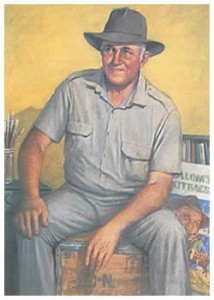
This is the portrait of Jack Absalom, painted by Cynthia Dowler, I think it was painted in the early 90’s, so at the time he would have been in his mid-60’s. It now hangs in the Jack Absalom’s gallery.
With hindsight I should have taken his photo with Maureen. Aren’t we all wise after the event?
It had been a long day from mines to film sets and art galleries and it was time for home and a relaxing drop.
The balcony outside our room and you know who in deep thought.
Behind me can be seen the tailings of the old seam. It is no longer being worked. We were the only guests at the hotel because we were there just before St Pats weekend when the Duke of Cornwall would be booked out. Being the only guests was a very relaxing time, and it gave us the chance to talk to Traci as she served breakfast.
Having our drinks on the balcony allowed us to watch the traffic passing, not that there was a lot of traffic after 5.00 pm, but we always received a wave from the passengers in the tourist buses. Perhaps we looked like locals . . . .
The following day would be our last, unfortunately.
Around the corner from our accommodation was an old railway station called Sulphide Street Station. It is no longer in use, but it was the location of a small railway museum.
As part of the museum they had the Silver City Comet – the first air-conditioned train in the Empire. It started its life in 1937 and reached a maximum speed of 130 km / hour.
The Comet train in 1937, and again in 2015.
First Class seating, and the chairs reclined. The yellow sign at the front indicates that the compartment is a smoking compartment – very un PC.
I was impressed with the size of the fully electric kitchen to supply the needs of passengers in 1937.
There is a section of the museum that has been given over to stories and interviews of migrants from Europe, just after the WW2. Some make very sad reading, and others are quite inspirational. Particularly those who could not speak English when they arrived, yet they managed to make a new home, learn a new language, and in a number of cases they became successful businessmen. They all wanted to fit in to Australia; none of them demanded that they should receive special treatment.
From the railway museum we drove to the top of the tailings created by the waste from the Line of Lode mine. From the balcony of our accommodation the ‘Lode’ stretched nearly the length of the town, and dominated the area.
From the top we had a magnificent view of Broken Hill. Close up the Lode is still a tailing dump.
There used to be a restaurant / coffee bar at the top – the building is still there, but it is closed for business.
Near to the closed restaurant is the miners’ memorial.
Minor’s Memorial
We walked inside the memorial and found that every minor who had been killed while working a Broken Hill mine is recorded. The deaths start in 1885 and carry on to the early part of this century. The names go on and on . . .
Of course around Australia we have the big Banana, Prawn, Crayfish, and Marino Sheep to name just a few. Here in Broken Hill they have the BIG SEAT!
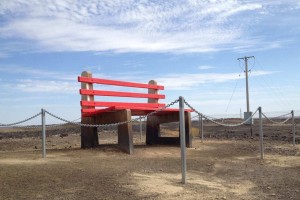 People used to be able to use the seat, but I don’t think the artist intended that it should be used, because I couldn’t see any access to the seat (steps etc). As you see it is now surrounded by a fence, perhaps to comply with health and safety and make sure a user couldn’t sue the town council if they fell off the seat.
People used to be able to use the seat, but I don’t think the artist intended that it should be used, because I couldn’t see any access to the seat (steps etc). As you see it is now surrounded by a fence, perhaps to comply with health and safety and make sure a user couldn’t sue the town council if they fell off the seat.
From the top of the Lode we drove to the local airport, which was about a ten minute drive. At the airport we found what we were looking for The Royal Flying Doctor Service headquarters.
What an inspiring organisation. They have a small information and museum area, which is well worth a visit.
This is one of the aircraft of the Flying Dr fleet.
We watched a short film of real incidents where sick and injured people were picked up by the flying ‘hospital’ and flown to a major population centre. The explanation of each exhibit and the video brought home how important the service is to anything up to 220,000 people who live in remote areas.
At the end of the video the receptionists asked us if we would like a conducted tour of their operation. Of course we agreed, and Larry showed us around and explained how the whole system
worked.
We saw that day’s operational team and up to the minute situation. The Service operates 24 hours a day, three hundred and sixty five days a year. When I realised how large the organisation is, the cost of running such an operation is a question that I had to ask. The total cost is around $360 million dollars a year, split between Federal and State Governments for operational costs, but not for replacement of equipment, including about forty aircraft, which have to be replaced after each aircraft reaches about twenty years, or so many thousands of landings. On average the Service has to replace three aircraft a year at a cost of $8 million each. For these aircraft replacements, and everything else from an office chair to a computer printer, has to come from public donations.
Australian TV made a fictional series of the Service in the 1990’s, which became very popular in Germany, UK & Belgium (no idea of the number of repeats), but donations from the European fan club to help support the Flying Doctor service, is worth about $1 million a year to the Service!
There is also a souvenir shop with a wide range of items for sale, but the best part for me was being shown around the operational centre. The centre was ‘real’ it was not created for the tourists.
One leaving the Royal Flying Doctor we had to find a cold drink so we decided to visit Bell’s Milk Bar, which is an icon in Broken Hill and not far from the airport.
Bell’s goes back to 1893, but is now stuck in the 1950’s. http://bellsmilkbar.com.au/
Regardless of Bell’s age the drinks were cold and thirst quenching.
The end of another great day and all of a sudden it is ‘balcony’ time and goodbye Broken Hill.
Broken Hill in the evening, taken from our balcony.
We did enjoy Broken Hill and the surrounding area, and perhaps one day we will return because there is much that we know we missed. The visit to the Palace Hotel was our only negative experience of our time in Broken Hill, but that wasn’t Broken Hill’s fault.
We are now half way through our list of accommodations – next stop the Barossa Valley after a six hour drive.
As we headed in to South Australia it was all open spaces. The right hand picture reminds me of Jack Absalom’s paintings.
When we crossed the border from New South Wales we were given a warning of a quarantine border 220 km south. No unchecked fruit was allowed in to the area south of the quarantine border, because this area was one of Australia’s main wine producing zones and they were not taking any chances of fruit fly and contamination.
Two and a half hours after reading the quarantine warning all vehicles were stopped at a checkpoint. The road was designed that a vehicle had to pass through this check point, so there was no getting through without being checked.
Of course we’d forgotten about two bananas in our chiller bag, until I was asked if I had any fruit. I gave the fruit to the inspector. There was a large sign stating that any fruit found would not be allowed to be consumed by the owner – hence the warning 220 km earlier . . . . . we live and learn as they stole this pensioner’s lunch.
I didn’t object to handing over the fruit as we had been warned.
Our next stop was Tanunda in the centre of the wine producing area. http://www.langmeilcottages.com/
We’d booked two nights at Langmeil Cottages. Our cottage had a queen bedroom, a small kitchen, and a living room come dining area. Outside we had a set of table and chairs if we wished to eat outside.
There were four cottages, all of a high standard. The walls between the cottages are thick stone, so we didn’t hear our neighbours at all. We had the end cottage on the right.
We also had the use of the swimming pool, but again we didn’t have time to take advantage of the pool.
We had just settled in and started to unpack a few things, when the doorbell rang. I thought it was our hostess returning to make sure that all was well. I answered the door to see two men standing there smiling.
‘Visiting the area are you?’ they asked, again just for a minute, I thought that they were connected with the owners of the property, but then I thought it was a strange question considering that we had just had a long chat with the lady owner.
Before I could answer the lady owner came hurrying around the corner of the main house and shouted at the two men to get out, and to leave her guests alone – get off my property she shouted ‘Don’t you dare bother my guests – GET OUT!’
At the same time I was asked by one of the men ‘Are you saved?’ They were Jehovah’s Witnesses doing the rounds of the area, but they had gone too far with this owner, because they were now at the rear of her main property, and well out of order. She stood there glaring at the two men pointing towards the road and demanding that they go, and to stop bothering her guests. I never did get the chance to invite them in to discuss their faith and the truth of being saved.
……………………..
Obviously the first thing everyone wants to do in the Barossa Valley is visit a vineyard and our accommodation was within walking distance to at least three. We had one full day so we had to make the most of it –
Peter Lehmann was just around the corner, which was about a ten minute walk. The problem was that I had a feeling that we would buy some wine, and a ten minute walk with 18 kilos is not my idea of being on holiday – so we drove the short distance.
The lady who showed us the wines, and discussed each one as we tasted, was very easy to chat to as she shared her knowledge. Jugs of water were available to help clean the pallet, and dilute the small amount of wine that we swallowed. There comes a time when spitting wine is not an option. At the end of the half hour we’d bought a mixed case! Good job we had our car.
Our next port of call was Maggie Beers farm shop. It was about a twenty minute scenic drive from the accommodation. For those who do not know Maggie Beers she is a famous self taught cook, and is very popular on Australian TV and in Australian magazines – of course she has had published quite a number of her own cook books.
Not being a shopper by nature (I hate shopping), I wasn’t sure what we would see at Maggie Beer’s Farm Shop. I needn’t have worried as I found the place to be a pleasure to visit. All the pickles could be tasted before buying, as were the jams and the different types of mustard. Of course the wine (made by Maggie’s husband) was also available for tasting . . . the whole experience was very enjoyable because of the relaxed atmosphere, the helpful staff and the ability to try everything before you bought.
If you wanted to stay for lunch the facilities were available.
Everything was laid out for ease of shopping, and tasting without any pressure.
After leaving Maggies with pates and pickles plus a cookery book we decided it was time for lunch. Tasting can make one hungry.
At the accommodation we had been told of a pizza maker who had won awards, not just in South Australia, but nationally and they made gluten free pizza, so we had to go and try one of their gluten free pizzas, Maureen being a coeliac.
The 40’s Café, and sometimes I’ve heard it called Roaring 40’s Pizza is in a small area called Angaston, very close to Tanunda. There was nothing flash about the place, but the girls behind the counter were friendly.
We ordered a smoky meat pizza – all the various meats being smoked.
When it came I was surprised at the size – it would have fed four adults.
It fed Maureen & I for lunch and we took three large slices home!
On the way back to the accommodation we decide to stop at another vineyard called Chateau Tanunda, which is nearly in the centre of Tanunda.
It is a beautiful setting for a vineyard. The left picture is the drive to the main house, and on the right is the bowling green close to the tasting area. We only bought two bottles to take home to Sydney – the car was becoming quite full of honey and cordial from Beechworth, pickles and pates from Maggie’s, wine from Tanunda, brochures and magazines from where ever we stopped and books from various second hand book shops.
The following day we could head for Adelaide – the Festival had finished and we could not check-in the B & B.
The drive from Tanunda took us an hour and a half, the shortest drive of the whole trip. With Maureen navigating and having studied Google’s maps for some time we found our way through the city to Possum’s Rest B & B in College Park, which is a suburb of Adelaide. http://www.possumsrestbedandbreakfast.com.au/
We parked outside and walked to the front door and rang the bell. A large collie dog bound down the corridor and through the fly-screen door to greet us and offer her head for scratching. Welcome to Possums Rest. At a slower pace the owners, Sue and Phil, opened the main door and greeted us warmly.
Possums Rest seen from the street.
Our en-suit accommodation was an extension of the main house. The location within the garden was nice and quiet with the vine covered pergola offering a very pleasant shaded area to sit out.
Inside the extension we had a bedroom / sitting area and an en-suit shower. We had accumulated a number of bags in addition to our suitcases and once they were dragged in to the accommodation we were a little cramped, but we coped fine. The weather was very kind to us and a cooked breakfast each morning was eaten under the pergola.
We had the use of the swimming pool, but once again I never found the time. We did have the use of the family laundry, which was a great help as I had reached the end of my shirts.
The accommodation was about a twenty to thirty minute walk to the centre of Adelaide so rather than dive in a strange city we decided to walk across the park. Phil was kind enough to drop us off at the start of the path through the park, but as we made our way deeper in to the park the tall plants blocked any landmarks, so we had to take pot luck as to our direction, but eventually we found our way to the main pedestrian shopping area.
As usual Maureen checked out the shops and I found a pub, where I sat and read. I seldom go anywhere near shops without a book!
We had been told that we could get a bus back to College Park area so we asked at the tourist office for the nearest stop. They were helpful and pointed us in the right direction. We found the stop and checked the timetable, only about ten minutes to wait.
I felt it was a little déjà vu – we waited, and we waited, but this time I didn’t have a waitress’s ear in which to whisper. After forty minutes I got so fed up I waved down a taxi and fifteen dollars later we were outside Possums Rest. Not a particularly positive experience of Adelaide public transport.
We’d telephoned Maureen’s cousin and told her at we had arrived in Adelaide. We made arrangements to meet at a Thai restaurant the other side of the city. The problem was that the maps I’d brought with me, and those supplied by the tourist office, only showed the small number of street that made up the CBD area, plus I didn’t have sat nav. My hesitation on the phone, as I considered the problem of finding the restaurant and the possibility of taking a taxi, caused Maureen’s cousin to offer to pick us up – I jumped at the idea. They lived in the Belair district, about thirty minutes outside the CBD, so the offer was really appreciated.
The Thai restaurant (Thai by 3 Monkeys) was very good the food authentic, based on our visit to Thailand a couple of years ago. Plus it was very pleasant to be chauffeured back to Possums Rest.
The following day I wanted to visit the old port of Adelaide because I’d docked there in the sixties and I wanted to see the changes. The drive took us around thirty minutes and as it was Sunday the roads were a lot quieter than during the week.
The port is well known for its Sunday market, so of course we had to visit this – but as it had an area dedicated to second hand books that was fine with me.
Later we visited the maritime museum and I was surprised to see the clipper vessel ‘City of Adelaide’, which had arrived from Scotland where it had been left to rot on a slip way.
On the left is the City of Adelaide in her prime, and how she looked when we saw her in 2015. Hopefully she will be fully restored and match the Cutty Sark for Australia.
The Maritime museum is excellent – full of interesting items and of life at sea for the migrants under sail and in the mid-20th century. I thoroughly enjoyed the visit, and found a apiece of my own ‘history’.
I sailed with a company called British India Steam Navigation Company and what did I find on the wall of the museum?
An engine plate from one of the Company ships
The following day Maureen and I had planned a visit to Glenelg, which is on the Southern Ocean. I considered staying at Glenelg rather than in the city, but I thought that we would be seeing much more of the city than we actually did see.
Again Maureen’s cousin and her husband offered to chauffeur us around and we all ended up in Glenelg, which is a lovely place. The ladies went their own way and Ray and I visited the local museum, another under rated museum, and walked the pier out to sea.
The museum is inside the Town Hall.
In the area in front of the Town hall is a monument to the founding of
South Australia.
The view behind the monument – the tram that can be seen is from Adelaide, and takes thirty minutes, so if we’d have stayed in Glenelg it wouldn’t have required us to drive.
The pier takes one over very clear water, so clear that it was easy to see a sting ray come in to the beach area. We followed it and then it was joined by another.
Top left, they met and glided towards the beach – the closest that they got to the beach was about twenty feet (six metres), at which time they turned and made their way along the beach, but angled towards the sea.
From Glenelg we made our way, by car, to Victor Harbor, which is about eighty kilometres south of Glenelg, for lunch. Note the missing ‘u’ in Harbor due to a spelling error by an earlier Surveyor General. Oddly enough the current railway station at Victor Harbor is spelt Victor Harbour.
The town has a history of whaling, hence the water feature in the park, although the last whale caught in the area was in 1872.
Granit Island, just off the coast of Victor Harbor, is linked to the mainland by a causeway, on which a horse tram carries passengers to and from the island.
At the end of the day the tram is locked up in the shed and the horse has its own stable. As it crosses the road the driver rings a hand bell continuously to warn cars. It is such an unusual sight that cars slow down anyway.
We walked across the causeway to climb the small hill on the island for a view of the Southern ocean – next stop Antarctica.
Of course once seen, I had to take a photo of the strangest road sign I’d see for ages.
It was our last day in Adelaide, so we decided to visit Hahndorf, which is in the Adelaide hills, a short drive from the city.
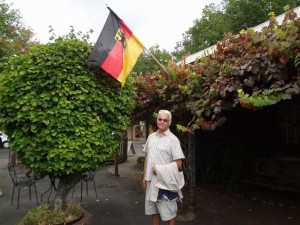 The town was original settled by Prussians from Europe. They arrived in 1838 off a ship called ‘Zebra’ under the command of a Dane called Dirk Meinhertz Hahn. The voyage out was very unpleasant, but once they arrived in Australia Captain Hahn stayed with his passengers and helped them to settle in their new country. In honour of his help and assistance they named the town after him.
The town was original settled by Prussians from Europe. They arrived in 1838 off a ship called ‘Zebra’ under the command of a Dane called Dirk Meinhertz Hahn. The voyage out was very unpleasant, but once they arrived in Australia Captain Hahn stayed with his passengers and helped them to settle in their new country. In honour of his help and assistance they named the town after him.
Obviously the town still has a strong German ‘flavour’ via the meat, bakeries and wine that is produce in the surrounding area.
It was the start of autumn and the feel was very European, with the trees changing colour. I must admit that I didn’t see any VWs, in this German town.
I found the beer to be expensive so didn’t buy any, which is just as well as I was driving. We had lunch at a café and sat on a small balcony overlooking the main road. The place seemed full of tourists and very few locals, other than those working in the shops.
The art centre was the best part for me. Besides the history of the town they had interesting pieces – earrings made from broken crockery and alongside the earrings there was the remaining pieces of the broken item. None of the crockery items were broken deliberately all were from residents in the town who gave the artist the accidentally broken bits of their own crockery, and the artist created items of jewellery. To say the items were unique is an understatement.
On the way back to Adelaide we had to pass another small town called Sterling (population about 4500). With its wet and mild climate it became a favourite of the British to escape the intense heat of a summer in Adelaide. It did have a very English feel to it and of course it had shops.
Maureen went to look at what she wanted to see, and I found a second hand book shop called ‘Chapter Two’, which I thought was a good name for a second hand book shop.
As I entered a young woman, who was typing on her lap top, greeted me and asked if I was looking for anything in particular. I said no thanks, just browsing and she went back to her computer.
After a few minutes later I thought I’d have a long shot and asked if her shop was computerised, she said ‘No, what did you have in mind?’ I told her that I’d been looking for a book called ‘The Phantom Major’ about the SAS in WW2. ‘Oh!’ she said ‘I think we do have that book’ and went to one of the shelves and pulled out a hard copy of the book with the original dust jacket still intact. I bought it for $10, it was in a better condition and cheaper than the paperback version that I’d loaned out in the late 60’s, and never had returned. I was very impressed with her ability to remember her books and it seems that she knew the location of every book that she had in stock.
I’d been looking for this book for some time and found it ironic that the story of the main character Lieutenant Sterling (as he was when he suggested the creation of the SAS), should be found in a small town called Sterling outside Adelaide. I like coincidences.
Four nights in Adelaide and we moved on to our next stop Robe, three and a half hours down the coast towards Victoria. We were on our way home and would stop three time before sleeping at home.
The drive was fine, until we came to a stretch that had salt bush trees and bushes on both side of the road which gave the impression that we were driving down a tunnel. It became monotonous and I had to make sure I didn’t lose my concentration.
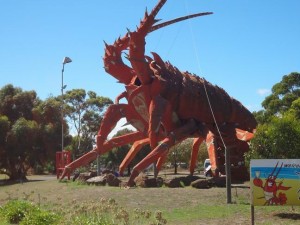 As we came out of the ‘tunnel’ area we entered Kingston only to be met by the largest lobster that I’d seen.
As we came out of the ‘tunnel’ area we entered Kingston only to be met by the largest lobster that I’d seen.
I believe his name is Larry – well why not Larry? Better than Claws.
Our motel in Robe was easily booked over the internet and they were good enough to ring me to clarify my booking weeks before we left home, couldn’t have asked for more. http://www.guichenbaymotel.com.au/
I’d booked a family room to make sure that we could spread out. The family room was at the junction of two rows of rooms and it also had patio doors which allowed me to back the car to these doors making unloading a lot easier.
Robe is quite town right on the Southern ocean. Tourism and commercial fishing seems to keep them going. We’d planned to stay two nights before the long haul to Ballarat in central Victoria.
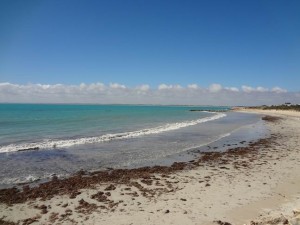 After unpacking we walked the length of the main road running through Robe. Many cars parked, but hardly any traffic – cars or foot traffic.
After unpacking we walked the length of the main road running through Robe. Many cars parked, but hardly any traffic – cars or foot traffic. 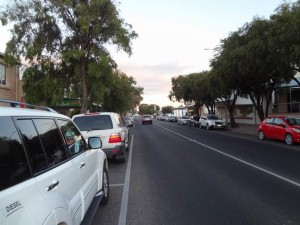
At the end of the small shopping area we came to part of the town beach area.
The ‘clean air’ views couldn’t be bettered. I only wish I was a better photographer.
I was standing on the coastal footpath for the picture on the left and the main road for the picture on the right.
We had our evening meal at the Caledonian Inn. The coffin oysters were the best we’d ever tasted. The beer and wine was well priced.
The following day, while Maureen went to check the shops I sat in the rear of this pub and read. I asked the bar man for a Guinness, and he asked if I wanted a pint.
I’d been ‘done’ before on this holiday as some of the areas offered pints, but they were smaller than a standard imperial pint. I asked him if it was an Irish pint or an Australian pint, He assured me it was the real thing, so I had a pint and then he asked me if I wanted a hat. It was the 18th March and the previous day was St Pat’s day so he had a few hats left over. Of course I accepted his gift of a hat, but I think I caused him to have second thoughts about St Patrick’s Day when I told him that St Patrick was a Welshman who been sent to Ireland to convert them to Christianity. That seemed to kill the conversation.
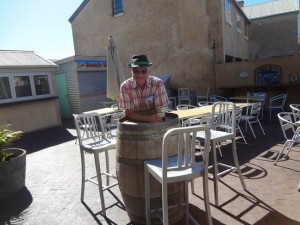 Regardless of the history lesson the beer was cold and it went down very well while I sat outside reading and wearing my new hat. At least it wasn’t a leprechaun hat with a bobble.
Regardless of the history lesson the beer was cold and it went down very well while I sat outside reading and wearing my new hat. At least it wasn’t a leprechaun hat with a bobble.
Next day we decided to walk to a lookout point which overlooked the ocean. We walked and walked, which was quite good because of the amount of sitting in cars that we’d done for the last week or so.
We climbed the small rise to the Mathew Flinders’ Memorial. 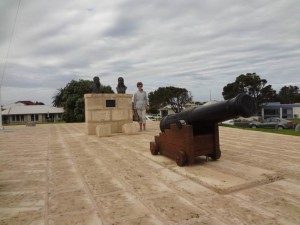
On each step leading up to the flag pole you can see dark patches – each one denotes a ship lost with local men aboard. I counted fifty six ships.
We passed this memorial and walked through the fishing port area – not a large port, but still interesting.
Memorial to fishermen lost at sea. Each of the ‘fish’ on the wall denotes a local fisherman who died at sea. You can go in to the memorial, but on the outside you get the fishing boat affect.
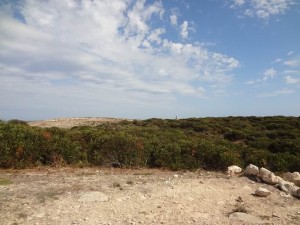 We thought that we would try and walk to the obelisk, which is on the headland, but it was just that bit too far to walk. The obelisk had been built in 1852 as a marker for ships entering port. The sea is slowly eroding the land in the area and it is expected that Robe obelisk will disappear one day. On the left taken from the road, and below I used the zoom on the camera to save the walk.
We thought that we would try and walk to the obelisk, which is on the headland, but it was just that bit too far to walk. The obelisk had been built in 1852 as a marker for ships entering port. The sea is slowly eroding the land in the area and it is expected that Robe obelisk will disappear one day. On the left taken from the road, and below I used the zoom on the camera to save the walk.
The obelisk at 40 feet tall looks closer than you think, but walking via the road adds that extra distance. 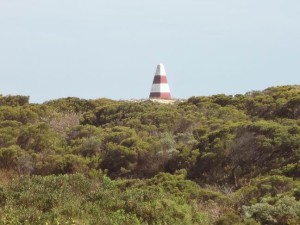
That evening we decided to visit a Malaysian restaurant, which was well advertised in the local tourist information literature.
We booked for 6.30 pm and asked the price for taking our own wine (BYO) and we were told $3.50 per person which is an average price.
When we arrived the BYO price was $8.00 per bottle, which even in Sydney is considered a rip off price. When we told them that we had been quoted a lower price when making the booking, we had a language problem of not understanding. Anyway we sat down at our table and ordered. My wife ordered beef rending and I the nasi goreng.
The food arrived and we shared both dishes. My nasi goreng was not really hot enough, because it had been served on a cold plate, plus it was more like standard fried rice than the traditional Indonesian dish.
Maureen’s dish was hot enough, and I tasted the rending. It wasn’t beef rending it was chicken rendang. By this time I’d lost confidence in the restaurant getting it right, plus I didn’t want to wait another twenty minutes, so we ate part of the meal. The ambiance of the restaurant was strange, because the six occupied tables were all grouped together at the front of the restaurant near the window, yet behind us was a great cavern of empty tables that disappeared in to darkness. Perhaps they were trying to save electricity and not light the rear of the restaurant.
When we came to pay I said, tongue in cheek, to the young Asian lady behind the counter, that there seemed to be a lot of chicken in the beef rending. She told me that they always put chicken in the rendang because people cannot tell the difference, due to the spicy sauce! I assured her that we were able to tell the difference between beef and chicken rendang. In addition having eaten nasi goreng in Malaysia and Indonesia, the meal her restaurant served wasn’t even a distant relation to a real nasi goreng. At this point I recognised the Asian smile of not understanding when the conversation is going down the wrong road. We left after paying the bill to the last cent, via credit card – no tip.
This was the third Chinese / Malay style restaurant that we’d visited during our holiday, and all three were well below the standard required for basic Asian food. Perhaps they play on the ignorance of the locals, rather than trying to educate the locals in to enjoying real Asian food.
Having visited a number of Asian countries or territories, and many Sydney Asian restaurants, there is no excuse for serving such poor quality Asian dishes.
As we walked back to our motel we had to pass the Caledonia Inn so we popped in to see how long we would have to wait for a plate of coffin oysters. Unfortunately they were packed and the wait was going to be too long, so we thought we’d try the local fish and chip shop for a small crayfish. They didn’t have any crayfish (all exported apparently) , so we asked for a local fish. Then we found out that none of the fish in the fish and chip shop was locally caught fish. Some species were from the Adelaide area (garfish), others from the Northern Territory (barramundi), and some imported (butter fish??), from where I do not know – but none from the fishing port of Robe, very disappointing. I tell a lie they did have local ‘flake’ commonly known as shark, which can be bought anywhere in Australia.
I liked Robe, and found it to be a relaxing place, even with my complaints of the local fish and chip shop, and the so called Asian restaurant. We did enjoy the food at the Caledonia Inn.
Up early next day to pack the car once again, and we were off to Ballarat in Victoria. The drive was interesting and the road had between 100 and 110 km speed limit. I’d estimated the drive to be about five and a half hours.
It was only as we got closer to the border between South Australia and Victoria did I start thinking about quarantine borders, because we had South Australian fruit in the car – and Queensland fruit if you count the bananas. Fortunately we did not come across a quarantine border.
We arrived in Ballarat early afternoon and checked in to Begonia City Motor Inn http://begoniacity.com.au/
We received a very warm welcome from Helen and Mick who were looking after the place while the owners were on holiday. Wouldn’t hesitate to return to this motel next time we are in Ballarat. Good size units, spotlessly clean, plenty of space and a swimming pool which again I didn’t use.
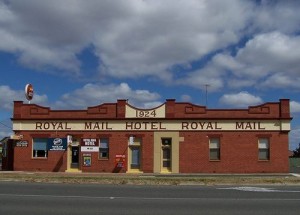 That evening we visited the Royal Mail Hotel, the local pub, which was about five minute walking from the motel. The meal was fine, we had fish – again – but this time it was butter fish, which as I’ve said is imported, but as Ballarat is so far from the sea we had little choice. The taste of the grilled fish was just right for me, boneless and not covered with sauces, I could taste the fish. The building might have been built in 1924, but the food was up to date, and the wine inexpensive.
That evening we visited the Royal Mail Hotel, the local pub, which was about five minute walking from the motel. The meal was fine, we had fish – again – but this time it was butter fish, which as I’ve said is imported, but as Ballarat is so far from the sea we had little choice. The taste of the grilled fish was just right for me, boneless and not covered with sauces, I could taste the fish. The building might have been built in 1924, but the food was up to date, and the wine inexpensive.
Up early the following morning for another five hour drive, but this time to Albury on the border of Victoria and New South Wales. It was Saturday and the roads were quiet ay 8.00 am, which helped me find my way through the city centre as I wanted the freeway to Melbourne.
Once on the freeway it was back to 110 km for the next ninety minutes, when we became involved with the freeway network of Melbourne. Even though we lived on the western side of Melbourne (Sunbury) for five years I didn’t recognise anywhere due to the network of roads that didn’t exist thirty years ago, so I was driving on the overhead road signs.
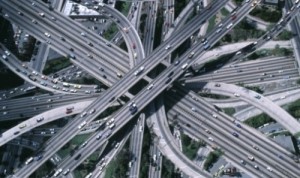 Some were good, others didn’t give you much warning to change lanes and being a ‘foreigner’ only a few drivers were polite enough to allow this foreigner to change lanes and not get funnelled back to Ballarat, or worse be routed, via a toll way, through Melbourne to Geelong, the complete opposite way that I wanted.
Some were good, others didn’t give you much warning to change lanes and being a ‘foreigner’ only a few drivers were polite enough to allow this foreigner to change lanes and not get funnelled back to Ballarat, or worse be routed, via a toll way, through Melbourne to Geelong, the complete opposite way that I wanted.
Is it any wonder some are referring to this area of Melbourne as Little Los Angeles?
Once through the ‘spaghetti of roads’ it was high speed northwards to the border for our last night of our holiday.
We’d decided to stay at the same hotel / motel that we used in January 2014 when we drove to Melbourne for a wedding.
Albury Manor House, which was more a hotel than a motel. http://www.alburymanor.com.au/
Rooms large and pleasantly furnished, our own small four poster bed and this time we had a small balcony, which was private enough that we couldn’t hear our neighbours.
Once again I missed out on a swim. 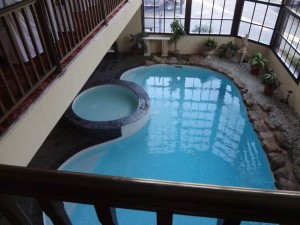
In the afternoon we wandered up and down the main street of Albury and many of the shop were still open even though it was Saturday afternoon. The smaller shops closed at 3.00 pm, but the main department stores stayed open later.
We checked various restaurants for our evening meal and found an Indian that had good comments, as well as a Thai. From memory I cannot remember seeing an Australian restaurant other than in a pub where we had a light lunch. The prices of the Indian & Thai restaurant we considered expensive considering that they were more expensive than the same style of restaurant in our local area of Sydney, I am not comparing prices with Sydney CBD.
We returned to the hotel for a rest before venturing out to decide on which restaurant to visit considering it was Saturday night. While having a quiet drink on our balcony I thumbed through the information brochure of the hotel and noticed that they offered full meals in the guest rooms, and the prices were lower than those outside, and they offered Australian style food!
We decide to stay in and eat on the balcony – a great idea and we had a lovely evening with beautiful food and wine. It couldn’t have been better for the last night of our holiday.
Once again we had an early start for the last five to six hour run home to Sydney.
Some years ago I’d visited the statue of the dog on a tucker box when I drove back to Sydney from Melbourne. I knew that Maureen hadn’t seen this statue, so I planned a small diversion for her to visit Gundagai on the way home.
There are two main poems about the dog on the tucker box – the one below, a cleaner version (from 1920s), and another (written in 1850s) at the bottom.
‘Nine Miles from Gundagai’ by Jack Moses
I’ve done my share of shearing sheep,
Of droving and all that;
And bogged a bullock team as well,
On a Murrumbidgee flat.
I’ve seen the bullock stretch and strain
And blink his bleary eye,
And the dog sit on the tuckerbox
Nine miles from Gundagai.
I’ve been jilted, jarred and crossed in love,
And sand-bagged in the dark,
Till if a mountain fell on me,
I’d treat it as a lark.
It’s when you’ve got your bullocks bogged,
That’s the time you flog and cry,
And the dog sits on the tuckerbox
Nine miles from Gundagai.
We’ve all got our little troubles,
In life’s hard, thorny way.
Some strike them in a motor car
And others in a dray.
But when your dog and bullocks strike,
It ain’t no apple pie,
And the dog sat on the tuckerbox
Nine miles from Gundagai.
But that’s all past and dead and gone,
And I’ve sold the team for meat,
And perhaps, some day where I was bogged,
There’ll be an asphalt street,
The dog, ah! well he got a bait,
And thought he’d like to die,
So I buried him in the tuckerbox,
Nine miles from Gundagai.
Bowyang Yorke’s Poem (this was his pen name) 1850’s version
As I was coming down Conroy’s Gap,
I heard a maiden cry;
‘There goes Bill the Bullocky,
He’s bound for Gundagai.
A better poor old beggar
Never earnt an honest crust,
A better poor old beggar
Never drug a whip through dust.’
His team got bogged at the nine mile creek,
Bill lashed and swore and cried;
‘If Nobby don’t get me out of this,
I’ll tattoo his bloody hide.’
But Nobby strained and broke the yoke,
And poked out the leader’s eye;
Then the dog sat on the Tucker Box
Nine miles from Gundagai.
The original poem (the short one above) Bowyang Yorke was his pen name, I don’t think anybody knows the real name of the writer. Add an ‘h’ in to ‘the dog s’ ‘at on the Tucker Box, which is why it was ‘cleaned’ up later.
We arrived home at 3.00 pm, after our 4305 km road trip, tired but very glad that we experienced everything.


